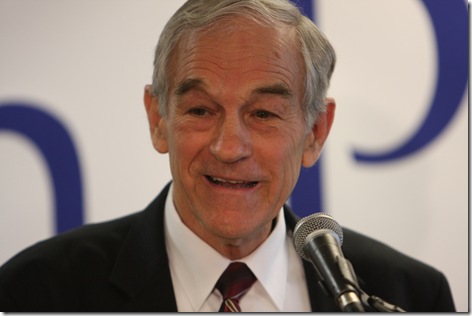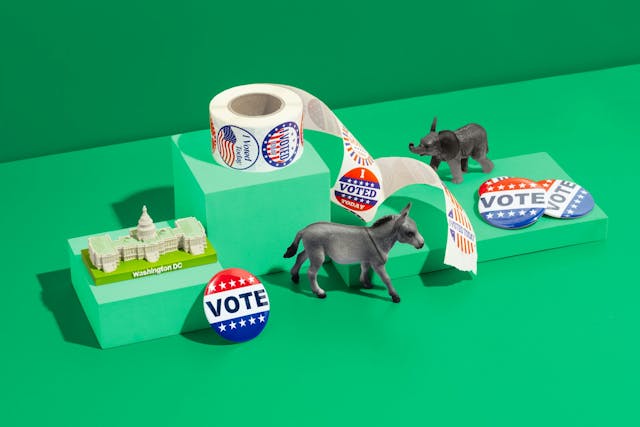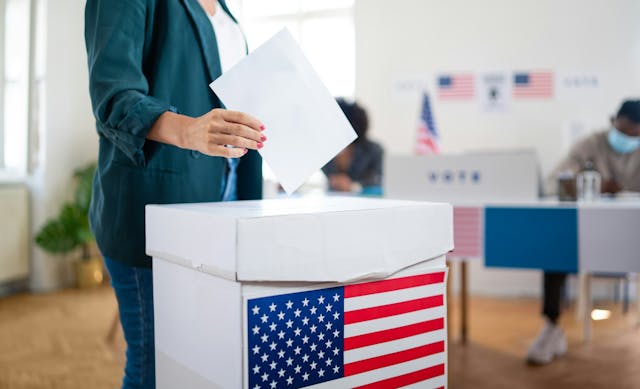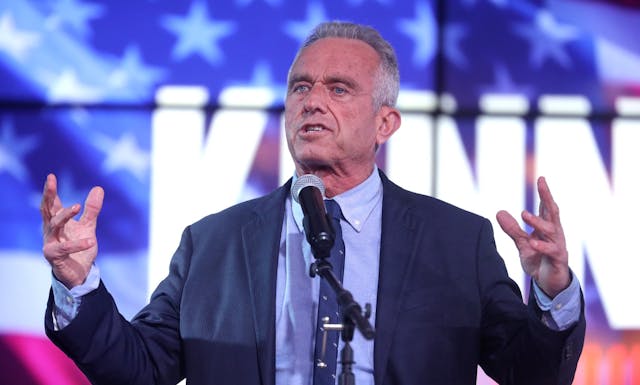A radical idea: Ron Paul runs as a Democrat in 2012

Does anyone remember that the first Tea Partiers were thousands and thousands of Ron Paul supporters who dumped a record-breaking $6 million into his presidential campaign on December 16, 2007, the anniversary of the Boston Tea Party?
Since then, the Tea Party “wave” has swept across the country; a wave that Ron Paul’s own son has ridden and credited with helping him land a seat in the United States Senate. Rand Paul ran for Senate in Kentucky as a Republican, keeping the more libertarian and “liberal” views he shares with his father under the sheets: a non-interventionist foreign policy, end the drug war, abolish the Patriot Act, and so on.
So why wasn't Ron Paul as successful as his son in the Republican primary for president? A few reasons:
1) No one knew who the heck he was until November 5, 2007, when internet supporters dropped the first “moneybomb”, unloading a record $4.3 million dollars into his campaign.
2) He was adamantly anti-war, running in a pro-war party. (You try convincing Willy Wonka that he shouldn’t eat anymore chocolate.)
3) He was ridiculed as a crazy kook, nut job, racist, and conspiracy theorist, who was out of touch with reality and the practical world.
4) He wants to end the drug war in a party that believes the best way to promote morality is to force one’s idea of morality on others; a party that associates smoking a joint with immorality.
5) Even though his support was strong and widespread on the internet and on the streets, he never got mainstream media attention. As a result, his message was largely contained to political junkies and activists.
Ron Paul’s message runs into a brick wall in the Republican Party. The party is heavily filled with supporters who are focused on religion, abortion, war, and hate for liberals. Even so, in a Rasmussen poll last year, Ron Paul was nearly tied in a hypothetical head-to-head race with Obama, even beating him by 19% in the independent voter category. The very reason Rand Paul, Senator-elect of Kentucky, was forced to temper his foreign policy and quiet his less “liberal” views, is the very reason Ron Paul should tap into the stream of voters on the left who have yet to hear his message.
Why might this work?
1) Paul would start off from day one with more than $10 million and an enormous base of support. His supporters don’t care about what party-label is by his name. They just want to support Ron Paul.
2) The war issue, lost in the 2010 debate, will make a comeback for a reason that only Ron Paul has articulated for the past '748 years': one of the main ways to rein in the huge deficit spending is to bring our troops home and stop policing the world. Democrats are ready to embrace this message after Obama's record military spending and escalation in Afghanistan, Pakistan, and Yemen.
3) Some pundits will still call him a kook, but it should be noted that he was the ONLY person running for president who recognized the extent of the economic recession before it officially commenced. He voted against the Iraq War and introduced Letters of Marque and Reprisal to execute a more focused and constitutional war in Afghanistan, warning that they would create chaos and cost trillions of dollars. Right again. Finally, most political commentators, whether they support him or not, now recognize that he has been a lot more right than he has been crazy.
4) Ron Paul is often called a part of the “far right”, although his views often find support from the “far left”: For example, he believes that families, friends, and churches are the proper role models in society, which means family, friends, and churches should not use the government to institutionalize religious beliefs. He believes that you cannot use force to bring about a change, that setting a good example is more powerful than starting wars, whether against terrorism, drugs, or even poverty. And, he is an ardent supporter of civil liberties. He has opposed FISA courts, the National ID card, the Patriot Act, torture, Guantanamo Bay, rendition, and the suspension of habeas corpus.
5) Ron Paul is now one of the most sought after guests on cable news. He is widely recognized as a man who speaks honestly. Therefore, if Ron Paul raised credible money, he would likely receive more attention from the media this time around.
Ron Paul and his supporters call him a “real conservative.” Yet, he is just as equally a “classical liberal.” And now that Ron Paul has grabbed as many “real conservatives” as he could in the Republican Primary in 2008, 2012 is an opportunity for him to win the support of “classical liberals” on the left.
And when he loses the Democratic Primary, he should bring all his supporters together and run as what he truly is: an Independent.




